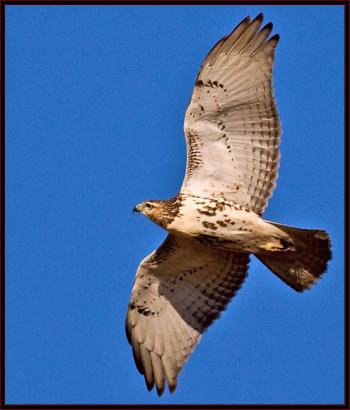To watch a hawk
It may be hard for the average backyard birder to believe, but the field of “hardcore birding” can be subdivided into extremely fine ranks. For example, there are those who love to study the plumage patterns of gulls; others are happy to spend each day poring over the feathers of shorebirds. Some long for the chance to scan the waves from the deck of a pitching boat to better understand the flight behavior of seabirds. These fine-tuned birding pursuits can be hard to fathom for most people.
But even those with virtually no interest in most birds, can, and often do, appreciate a burning desire for hawk-watching. Most people, no matter their level of passion, perk up at the mention of a hawk or an eagle. It’s always a thrill to see a hawk sitting in a roadside tree or an Osprey on its massive stick nest. But it doesn’t compare to watching hundreds or even thousands of hawks pass over the top of a mountain or a spit of land jutting out into the ocean.
Hawks and raptors, which include falcons, eagles and Ospreys as well as vultures, are among the species groups that are more-or-less strict diurnal migrants. To move the thousands of miles from wintering grounds to breeding grounds, these birds, unlike songbirds, do not rely on their ability to flap continuously but instead have learned how to ride currents of air with skills that would make a surfer jealous.
Some take advantage of rising columns of air (thermals), riding them up thousands of feet into the sky like Willy-Wonka’s glass elevator before gliding down to reach the bottom of the next thermal. One hawk common in summer in Maine, the broad-winged hawk, regularly uses this strategy as it undertakes what is one of the longest migration routes of our hawks. They also form migrating flocks referred to as “kettles” that can build up until they consist of hundreds, even thousands, of individual birds. Broad-winged hawks pass south in largest numbers in inland locations, usually in September.
Other hawks make use of windy conditions, sometimes rising high on updrafts from wind that bounces off cliffs or mountain sides; other times they cruise with the help of strong, gusty winds going in the right direction. In the late fall here in Maine, this usually means that days with winds blowing briskly from a northerly direction can play host to good numbers of hawks heading south. Red-tailed hawks, with their long, wide wings and broad, short tails, are made for soaring flight and are an abundant October migrant, especially at inland hawk watch locations.
Along the coast at this time of year, it is common to see lots of the small, blue-jay sized sharp-shinned hawks, with their short, rounded and proportionately long, thin tails that make them more adept at short glides and quick flaps of the wings. Sharp-shinned hawks are a species of hawk that specializes in eating other birds.
Likewise, the merlin, a similarly sized member of the falcon family, also enjoys snacking on songbirds; and their long, narrow, pointed wings and long, thin tails provide the “tools” they need to make them adept at catching them. They are a common migrant along coastal Maine in fall.
But keep your eyes open for the big tough cousin of the merlin, the peregrine falcon. Many people are surprised how regularly this dramatic large falcon is seen by hawkwatchers right here in Maine.
Dr. Jeff Wells is the senior scientist for the Boreal Songbird Initiative. During his time at the famed Cornell Lab of Ornithology and as the Audubon Society's national bird conservation director, Dr. Wells earned a reputation as one of the nation's leading bird experts and conservation biologists. Jeff's grandfather, the late John Chase, was a columnist for the Boothbay Register for many years. Allison Childs Wells, also formerly of the Cornell Lab of Ornithology, is a widely published natural history writer and a senior director at the Natural Resources Council of Maine. Together, they have been writing and teaching people about birds for decades. The Maine natives are authors of the highly acclaimed book, “Maine's Favorite Birds.”




























